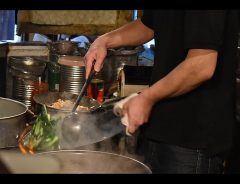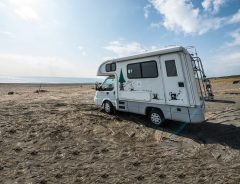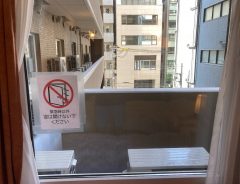
Source: © SocialWire Co., Ltd.
Demand for hotel rooms still sluggish despite ‘Go To’ campaign to boost domestic tourism
- Tags:
- accommodations / coronavirus / COVID-19 / Go To Travel / Hotel
Related Article
-

Tokyo’s Book And Bed Hostel Installs Bar So You Can Grab A Book And Nightcap
-

Japanese katsu chain answers takeout call with heavy duty bentos
-

Eatery feeds people during pandemic by making takeout meals with the ingredients they provide
-

Telework in the great outdoors with camping car rental service Caravan Work
-

Flowers Removed From 600 Year Old Wisteria Tree In Order To Deter Visitors
-

A Personal Covid-19 Experience in Japan


The coronavirus pandemic is continuing to take a grim toll on Japan’s tourist trade. A month has passed since the government launched its ‘Go To’ campaign in an effort to boost the number of people taking holidays in Japan, but demand for accommodation remains sluggish, a survey by online reservation site Atta has found.
Atta looked at room rates for bookings made during the first month of the ‘Go To’ campaign, which started on July 22nd, 2020. If there was any increase in demand for accommodation, it would be reflected in higher prices at the 32,541 hotels and inns registered with Atta. The survey found that prices did not increase at all in the month following the launch of ‘Go To.’.
This graph shows room rates for reservations made over the 50 days following the launch of the ‘Go To’ campaign. Note how prices tail off as the check-in date approaches. | © SocialWire Co., Ltd.
When the campaign was launched, many establishments set about giving their rooms deep cleans, in the hope that this would encourage more bookings. Some hotels and inns took on additional staff, as they usually do in the summer months, and many of them actually raised their prices, in anticipation of rising demand for rooms.
Unfortunately, their optimism proved premature. Across the board, establishments were forced to lower their prices again just before check-in, as it became clear that the nation’s punters weren’t taking the bait.
In a typical year, prices for hotel rooms tend to peak during the summer vacation, with the Saturday before the start of the Obon holidays being especially busy. Compared with Saturday, August 10th, 2019, prices on Saturday 8th August 2020 were 34% lower.
Across the country, hotels and inns are struggling to fill rooms, with tourist hotspots in Kyoto, Yamaguchi, Oita, Kanagawa and Nara prefectures being particularly hard hit. The only prefecture to buck the national trend is Nagano, which has several resorts popular with Tokyoites looking to escape the summer heat.
In a typical year, many holidaymakers fly to Hokkaido, but with fear of infection all pervasive, they are opting for resorts that can be reached by car. This is good news for hotels and inns in Nagano, but a disaster for Hokkaido, where hotel owners are struggling to fill rooms.
Bridge over the Taushubetsu River; tourism in Hokkaido has been hard hit by the slump in visitor numbers. | 上士幌町 / CC BY 4.0
Atta says that there is as yet no prospect of demand picking up in the autumn, with room rates for September and beyond only falling. The only silver lining to the dark cloud hanging over the country’s hotel trade is that the upper end of the market – rooms costing upwards of 50,000 yen per night - is still holding up well.
“Travel demand will not increase until the infection status of the new coronavirus is stable,” said a spokesperson for Atta. “We will continue to monitor demand for accommodation and accumulate data that can be derived from domestic accommodation charges in order to provide useful information to those looking for accommodation.”